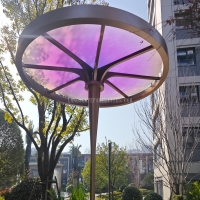Welcome to the website for landscape facilities products and knowledge.
How do landscape tables perform in areas with high wildlife activity or pest exposure?
Landscape tables are a popular choice for outdoor spaces, but their performance in areas with high wildlife activity or pest exposure depends on several factors. The durability of these tables largely hinges on material selection. Metal or high-density polyethylene (HDPE) tables resist chewing and burrowing from pests like rodents, while teak or cedar naturally repel insects due to their oils.
In regions with frequent wildlife encounters, tables with sturdy, anchored designs are less likely to be tipped over by animals. Powder-coated finishes or treated wood can also deter pests and prevent damage from moisture or UV rays. Regular maintenance, such as cleaning and applying protective sealants, further extends their lifespan.
For optimal performance, avoid placing tables near dense vegetation or food sources that attract wildlife. Elevated designs or tables with smooth surfaces minimize hiding spots for insects. By choosing the right materials and designs, landscape tables can thrive even in challenging environments.
Related search:

Recommendation
Metal frame with gradient color acrylic combined with high-end shading landscape facilities